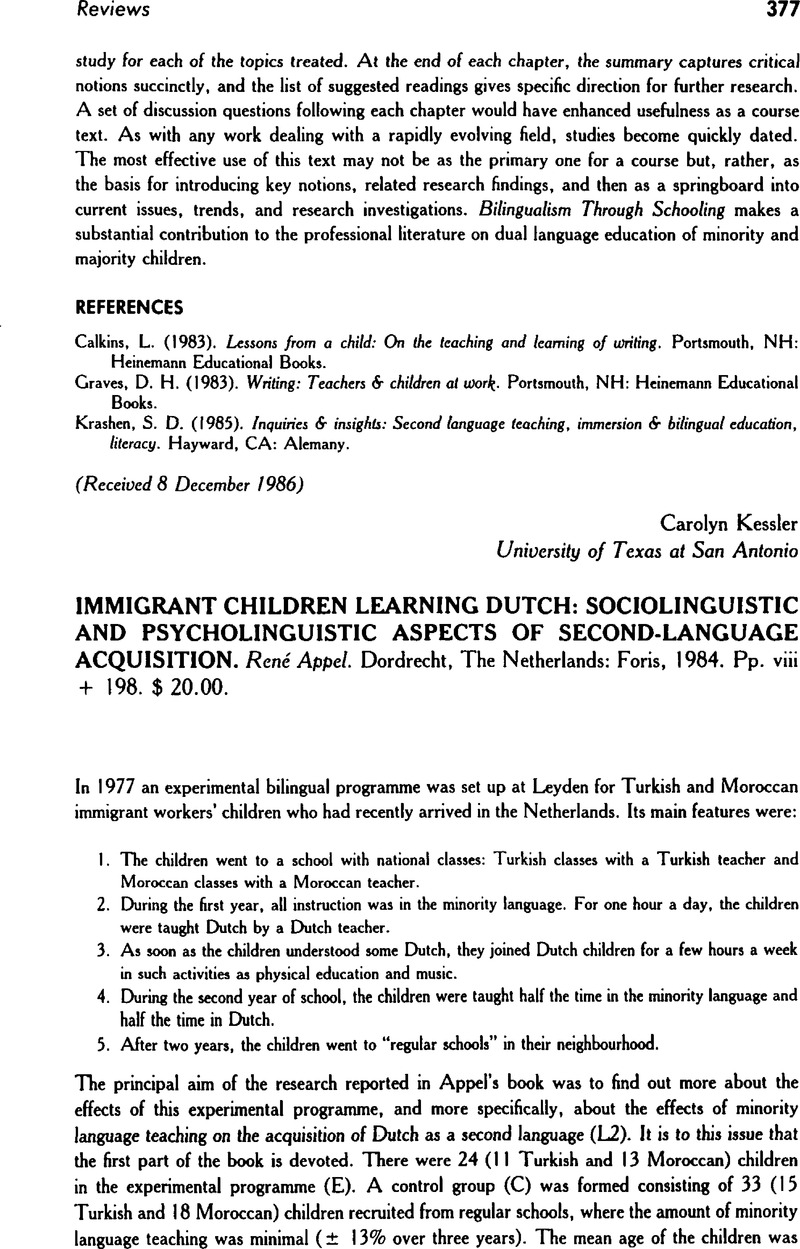No CrossRef data available.
Article contents
IMMIGRANT CHILDREN LEARNING DUTCH: SOCIOLINGUISTIC AND PSYCHOLINGUISTIC ASPECTS OF SECOND-LANGUAGE ACQUISITION. René Appel. Dordrecht, The Netherlands: Foris, 1984. Pp. viii + 198. $20.00.
Review products
IMMIGRANT CHILDREN LEARNING DUTCH: SOCIOLINGUISTIC AND PSYCHOLINGUISTIC ASPECTS OF SECOND-LANGUAGE ACQUISITION. René Appel. Dordrecht, The Netherlands: Foris, 1984. Pp. viii + 198. $20.00.
Published online by Cambridge University Press: 07 November 2008
Abstract
An abstract is not available for this content so a preview has been provided. Please use the Get access link above for information on how to access this content.

- Type
- Reviews
- Information
- Copyright
- Copyright © Cambridge University Press 1987
References
REFERENCES
Cummins, J. (1978). Educational implications of mother tongue maintenance in minority-language groups. The Canadian Modern Language Review, 34, 395–416.CrossRefGoogle Scholar
Cummins, J. (1979). Cognitive/academic language proficiency, linguistic interdependence, the optimum age question and some other matters. Working Papers on Bilingualism, 19, 197–205.Google Scholar
Cummins, J. (no date). The role of primary language development in promoting educational success for language minority students. Toronto: Ontario Institute for Studies in Education.Google Scholar
Jansen, B., Lalleman, J., & Muysken, P. (1981). The alternation hypothesis: Acquisition of Dutch word order by Turkish and Moroccan foreign workers. Language Learning, 31, 315–336.CrossRefGoogle Scholar
Krashen, S., Long, M., & Scarcella, R. (1979). Age, rate and eventual attainment in second language acquisition. TESOL Quarterly, 13, 573–582.CrossRefGoogle Scholar
Schumann, J. (1978). The acculturation model for second-language acquisition. In Gringas, R. (Ed.), Second language acquisition and foreign language teaching (pp. 27–50). Arlington, VA: Center for Applied Linguistics.Google Scholar
Taylor, B. (1975). The use of overgeneralization and transfer learning strategies by elementary and intermediate students of ESL. Language Learning, 25, 73–107.CrossRefGoogle Scholar


